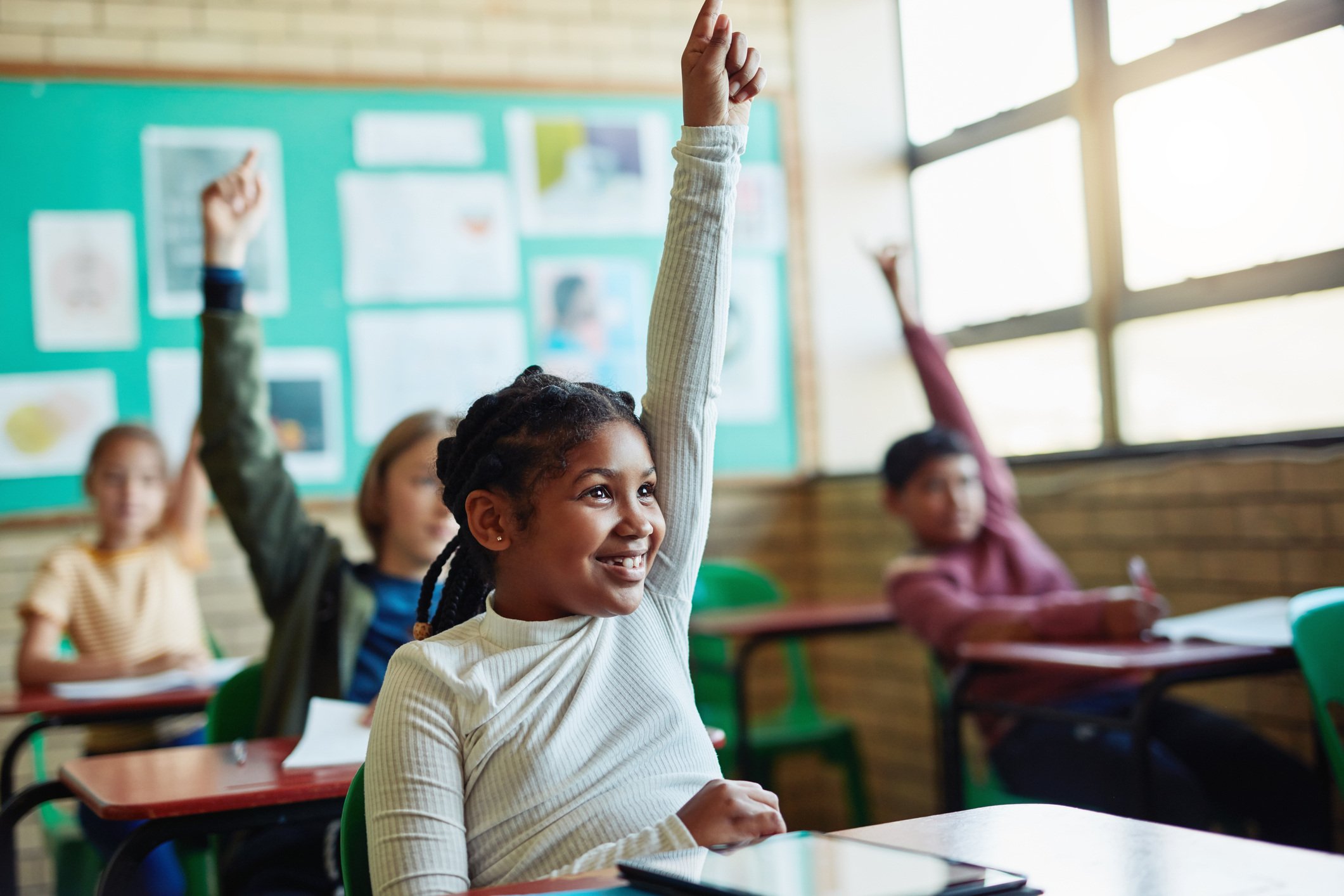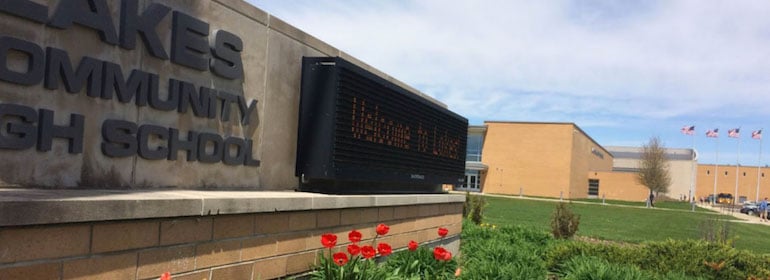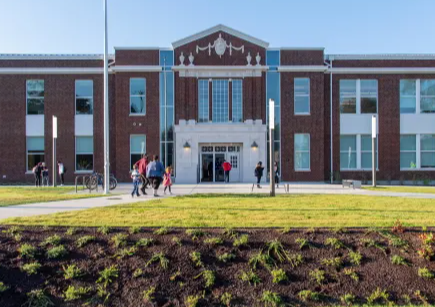There’s no such thing as an average learner. Every student carries with themselves their own distinct blend of strengths, challenges, and experiences that shape their learning path. This individuality underscores the importance of understanding and embracing learner variability—a concept at the heart of tailored, effective education.
In this blog, we delve deeper into the nuances of learner variability, explore its connection to Multi-Tiered System of Supports (MTSS), and provide actionable strategies to support every learner's unique journey.
This blog is an extension of Panorama’s Designing MTSS with Learner Variability and a Whole Child Focus webinar, in partnership with Digital Promise.
MTSS and Learner Variability
A Multi-Tiered System of Supports (MTSS) is a robust framework designed to meet the diverse needs of all students. At its core, MTSS is about proactively identifying and addressing challenges students might face, ensuring they receive the necessary support at the right time.
By developing a deep understanding of what learner variability entails, district leaders can fine-tune MTSS strategies to resonate more profoundly with each student's unique strengths and challenges. Recognizing and embracing learner variability within MTSS not only enriches educational approaches, but also paves the way for a truly inclusive and effective learning environment.
What is Learner Variability?
Learner variability is the recognition that each student has a unique set of strengths and challenges across a whole child framework. These strengths and challenges are interconnected and vary according to context.
This recognition goes beyond mere academic abilities; it delves into the intricacies of a student's emotional well-being, their socio-cultural context, and even the dynamics of their immediate environment.
A Focus on Student Strengths
Traditional educational systems often lean heavily towards addressing perceived deficits. Yet, to truly harness the potential of every learner, we must also shine a spotlight on their inherent strengths. This comprehensive approach, examining students across the entirety of their experiences and capacities, is what encapsulates the essence of learner variability.
Learner Variability vs. Learning Styles
It's crucial to differentiate between learner variability and the popular notion of "learning styles." While the latter has permeated educational discourse, it's important to note that research doesn't robustly support the rigid categorization of students into distinct learning styles. Instead, the reality is more fluid: our learning processes are ever-evolving, influenced by a range of factors, such as:
- Subject matter
- Individual interests
- Varying levels of motivation
- The mode of instruction, be it in-person or online
At its core, learner variability underscores the dynamic nature of learning, emphasizing that there isn't a singular, static way in which we learn or engage with content.
Design For Learner Variability
Designing instruction tailored to learner variability ensures that every student can thrive. The following principles can help you proactively design for such variability:
Universal Instruction
- Create Inclusive Environments That Foster Sense of Belonging
In this webinar, Jessica Jackson, Director of Professional Learning at the Learner Variability Project, states, “We build students’ sense of belonging from the start when we intentionally help students feel accepted for exactly who they are and what they bring to our classroom communities.”
Every student deserves to feel seen, valued, and understood. By fostering inclusive environments, we not only acknowledge learner diversity but also ensure that every student feels a genuine sense of belonging.
Read the Case Study: How Ogden High Increased the Graduation Rate to 95%—and Helped 80 More Students Feel a Sense of Belonging - Use a Strength-Based Approach
Rather than focusing solely on deficits, recognize and leverage each student's unique strengths. Celebrating these strengths can boost confidence and motivation, making learning more engaging and effective. This approach also:
-
- Supports students living with trauma and chronic stress
- Emphasizes understanding culture as a way of being and its impact on child development
- Builds on the understanding that students learn through interactions
- Keep the Science of Learning in Mind
Understand the intricacies of how students learn, from intaking information to maintaining knowledge in their long-term memory. By grounding instructional design in evidence-based practices, educators can create more impactful and lasting learning experiences. - Design for Student Agency
We want students to be lifelong learners, and that means helping students learn how to better understand themselves and their needs as learners. Empower students to take charge of their learning journey. When students have a voice and choice in their education, they become more invested, motivated, and engaged.
Portrait of a Learner For Tier 2 and 3
- Collect Data That Reflects a Whole Child Lens
Move beyond just academic metrics. Incorporate data that provides insights into students' well-being, behavior, and sense of belonging. A holistic view is crucial for understanding and addressing learner variability effectively.
Related: Level up your data with Panorama Student Success
- Beyond Academic Data
Academic success is multifaceted. Factors like a student's sense of belonging, behavior patterns, and life skills play pivotal roles in their overall success. By considering these elements, educators can craft interventions that resonate on a deeper level.
- Select Interventions That Support the Whole Child
When choosing interventions for Tier 2 and 3, prioritize those that are the best fit for a student’s needs. This approach ensures that interventions are not just reactive but are tailored to nurture every aspect of the learner.
By embracing and designing for learner variability, we pave the way for more inclusive, effective, and transformative educational experiences.
Creating an MTSS That Supports Learner Variability
For educators and district leaders, the commitment to today’s students extends beyond mere instruction; it encompasses creating environments where every student can thrive. By aligning your district’s MTSS with the principles of learner variability, you can empower educators with tools and strategies tailored to individual student needs. Such an alignment ensures that MTSS is not just a framework but a dynamic, responsive system that prioritizes equity, inclusivity, and holistic student success.
Build Stakeholder Alignment & Buy-In
For MTSS to be effective, it's crucial that all stakeholders, from educators to parents, understand its importance and relevance. Demonstrating the tangible benefits and showcasing real-life success stories can foster alignment and buy-in across the board. This can be done by:
1. Providing Ongoing Professional Development- Build Knowledge and Skills
Equip educators with the tools, strategies, and insights they need to address learner variability effectively. Regular training sessions can enhance their understanding and proficiency in tailoring instruction to diverse student needs. - Implement Coaching and Mentorship: Pairing newer educators with seasoned mentors can further accelerate their growth, ensuring a consistent approach to supporting learner variability across the institution.
- Create Teams
Establish dedicated teams or committees focused on MTSS. These teams can drive initiatives, monitor progress, and ensure that learner variability remains at the forefront of decision-making. - Allocate Time and Resources
Recognize the value of time and allocate dedicated resources to these teams. Regular meetings, collaborative planning sessions, and access to relevant materials can bolster their effectiveness.
- Have a Plan to Collect, Review, and Monitor Data
Develop a systematic approach to gather comprehensive data on student performance, behavior, and well-being. Regularly reviewing this data can offer insights into areas of strength and areas needing additional support.
- Offer Access to a High-Quality Interventions Library
Curate a menu of evidence-based interventions tailored to address various facets of learner variability. Ensuring easy access to these resources empowers educators to make informed decisions and select interventions best suited to individual student needs.
Weaving the principles of learner variability within MTSS and adopting a proactive, data-informed approach situates educational institutions to pave the way for every student’s success, tailoring instruction to their unique learning journey. By rallying stakeholders around the implementation of these strategies, this commitment gains strength and critical support.
Read Now: Creating an MTSS Implementation Plan: 6 Keys for Success
Next Steps for District Leaders: Elevating Student Voice
Recognizing and addressing students’ unique strengths, goals, and challenges not only refines interventions, but also deepens student engagement.
Furthermore, elevating student voice through tools like Panorama's Student Survey amplifies insights into vital facets of school life—ranging from climate and teaching methods to relationships and a sense of belonging. Embracing learner variability isn't just about customization; it's about fostering environments where every student feels seen, heard, and empowered.







.webp?width=478&height=557&name=panorama_student_survey-1%20(1).webp)